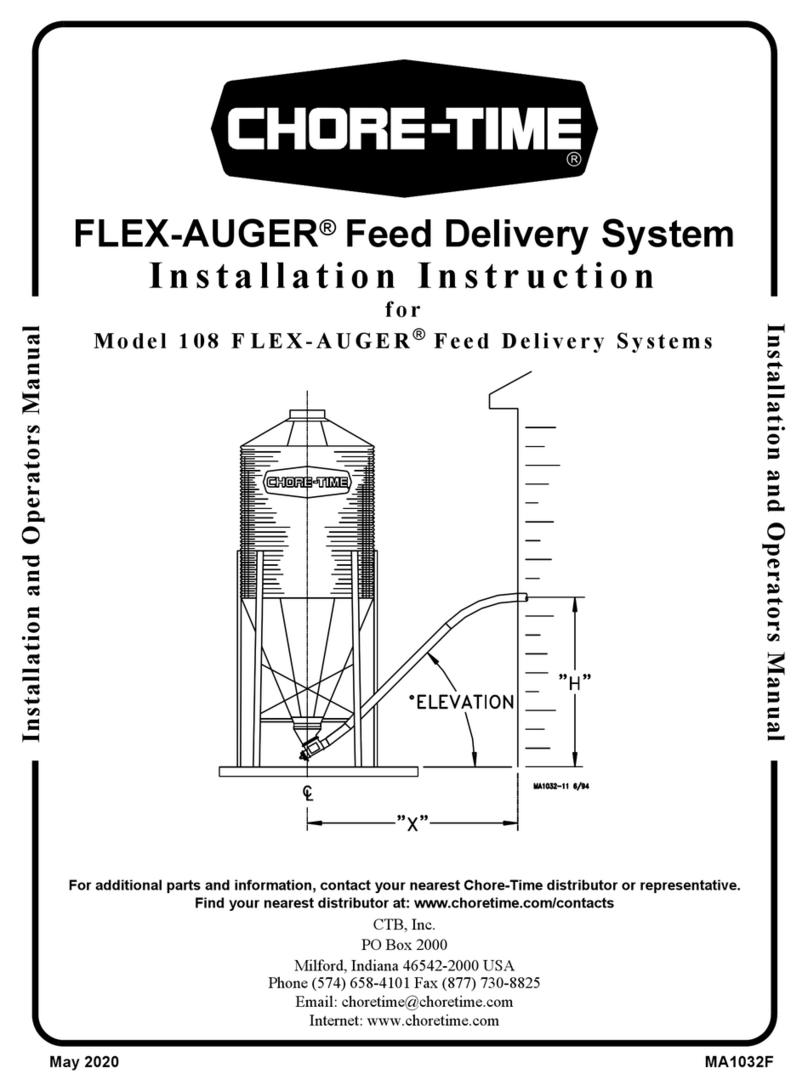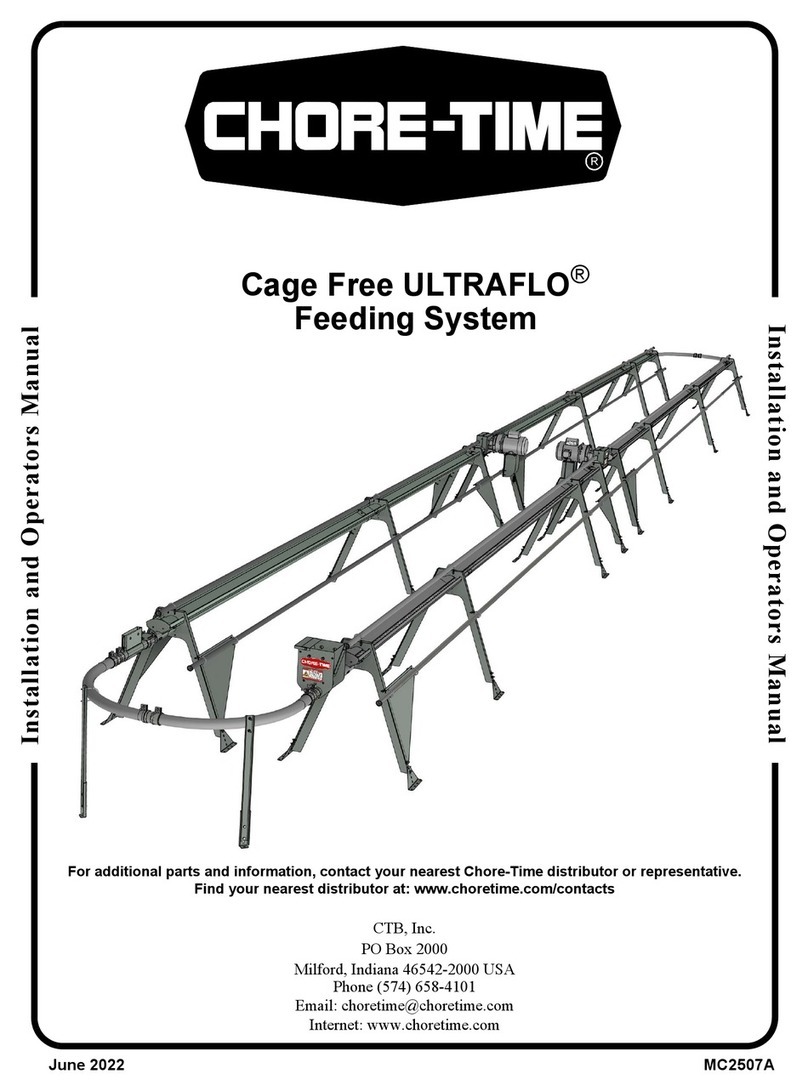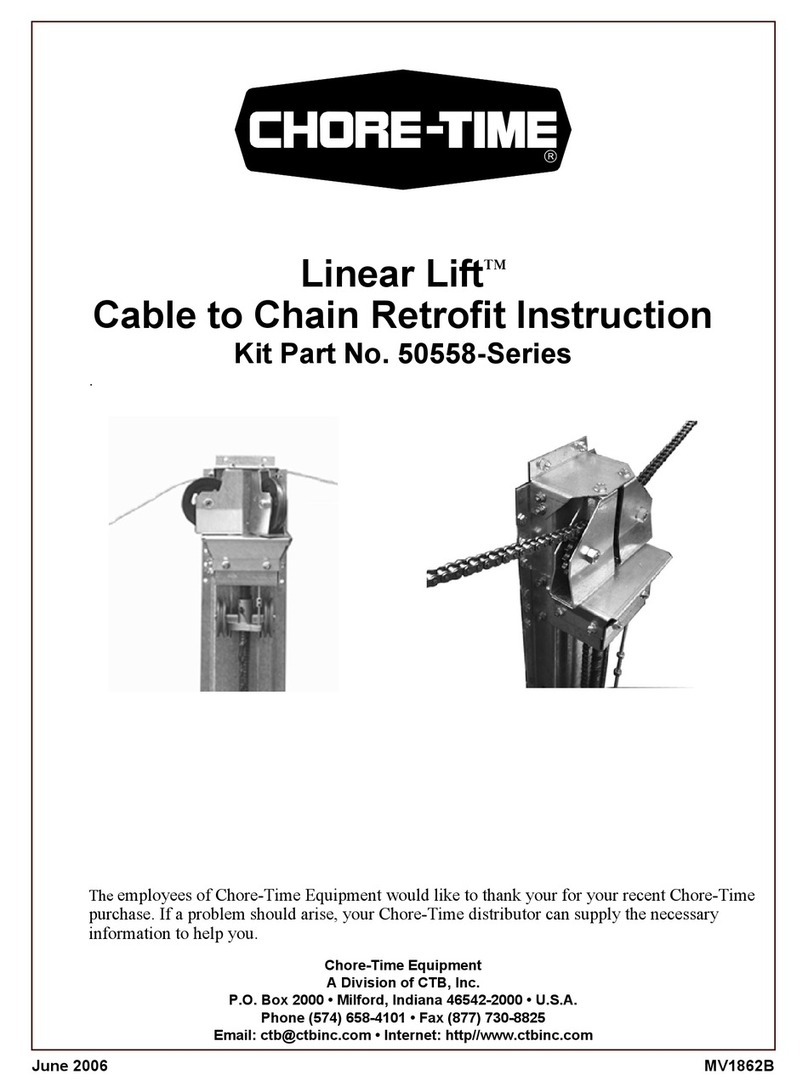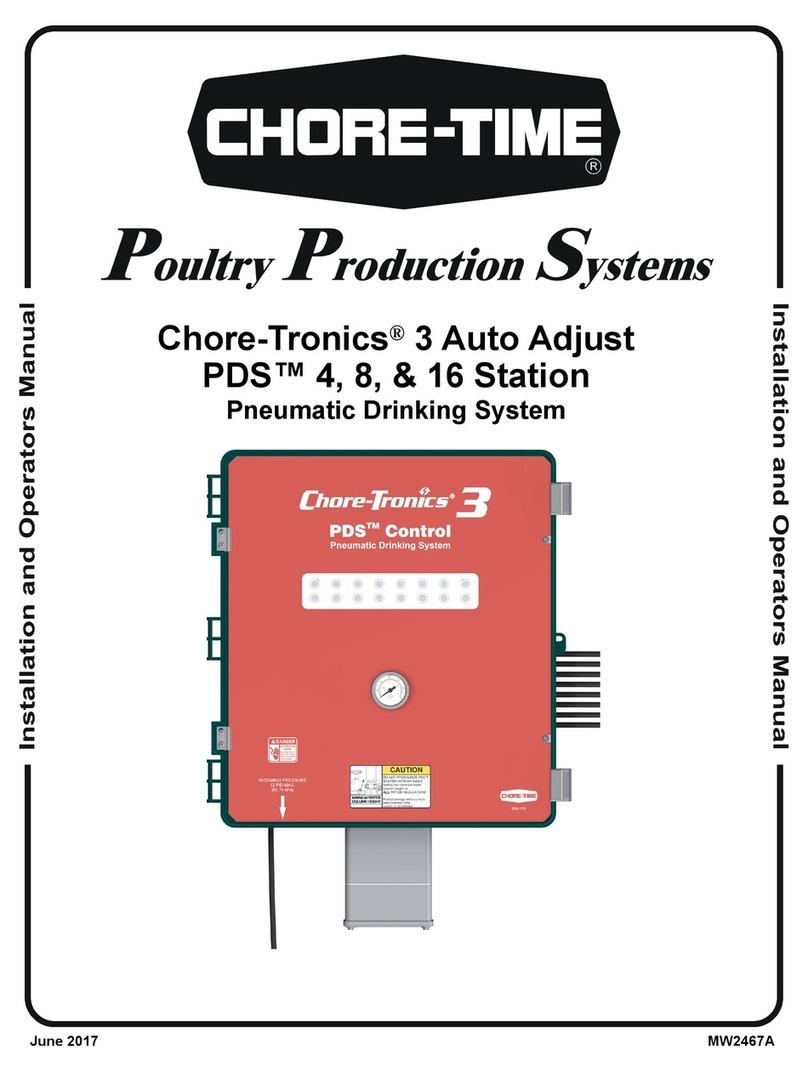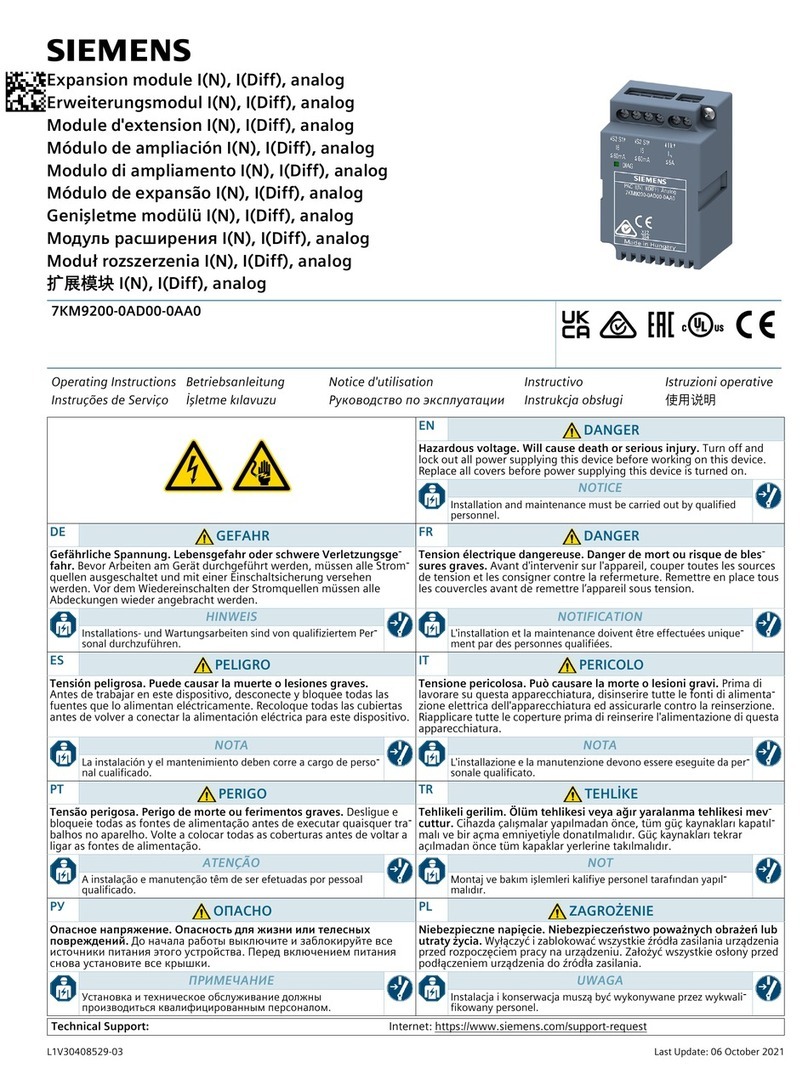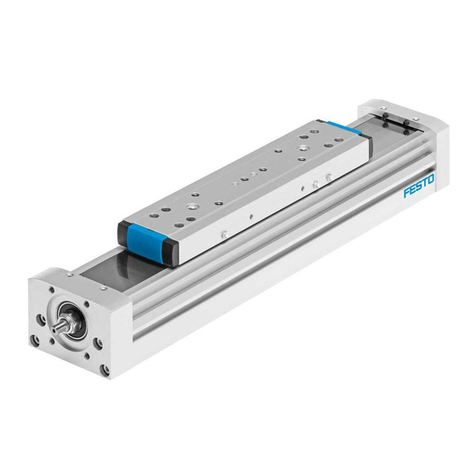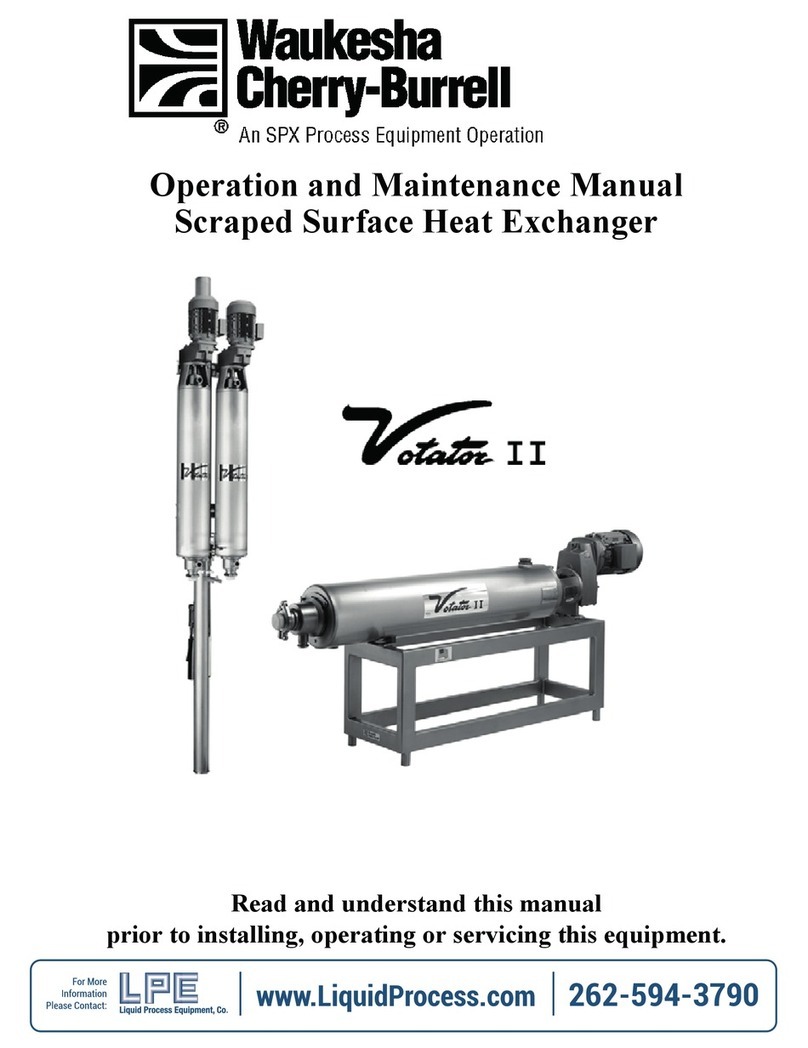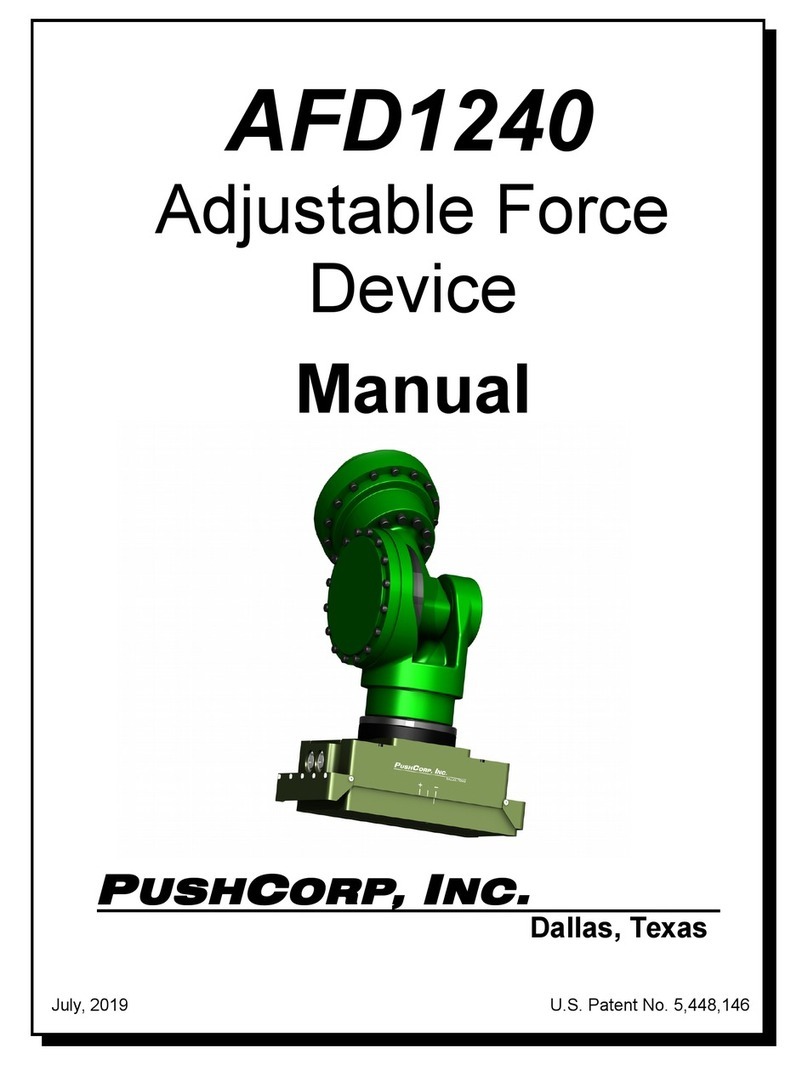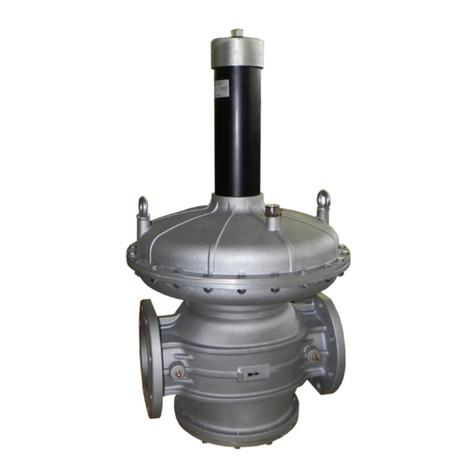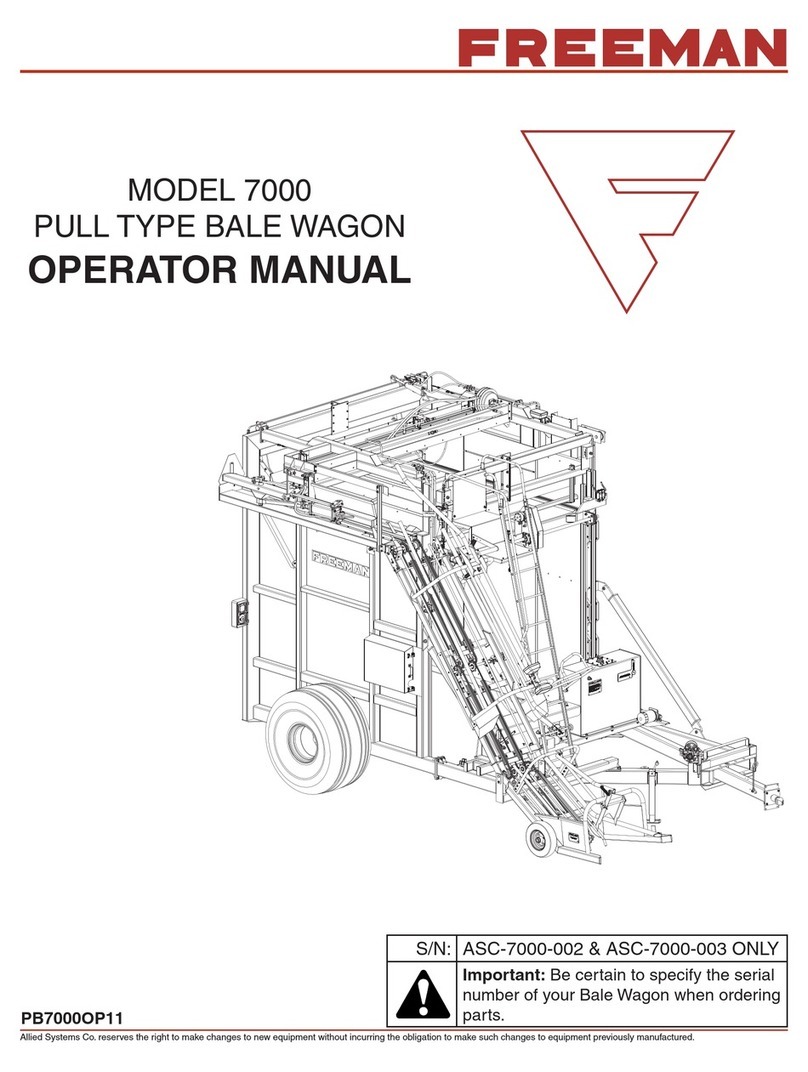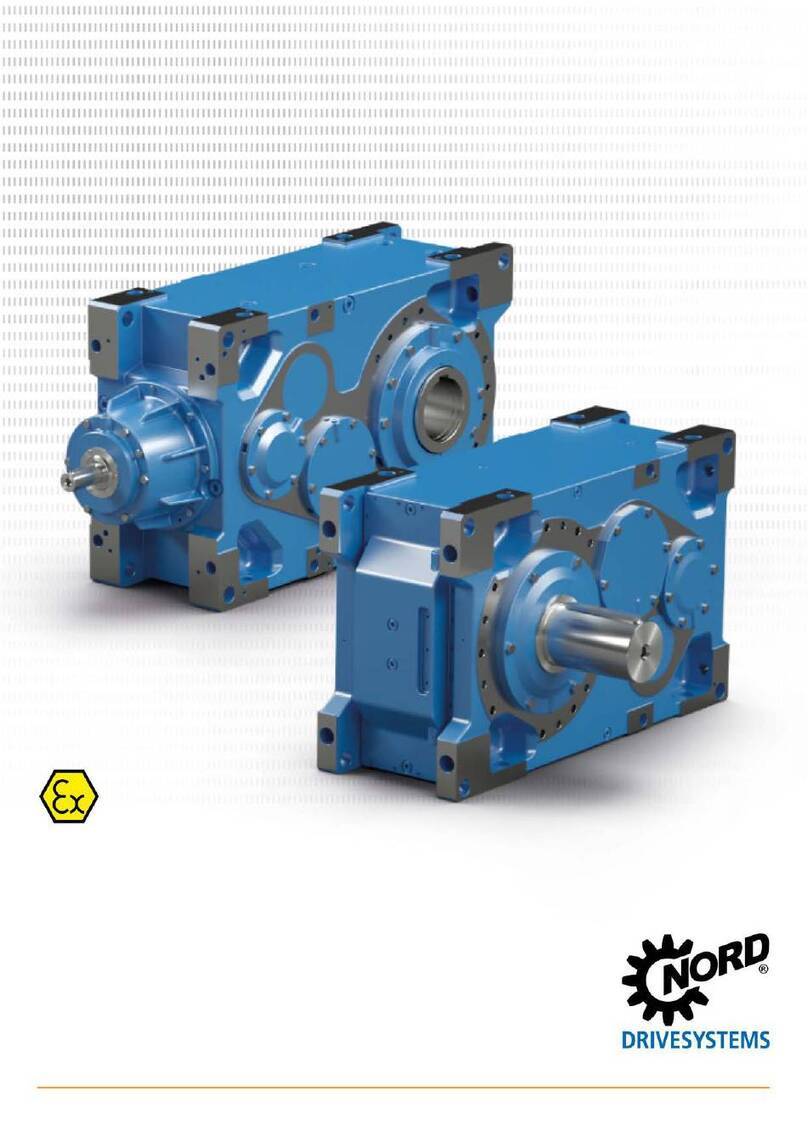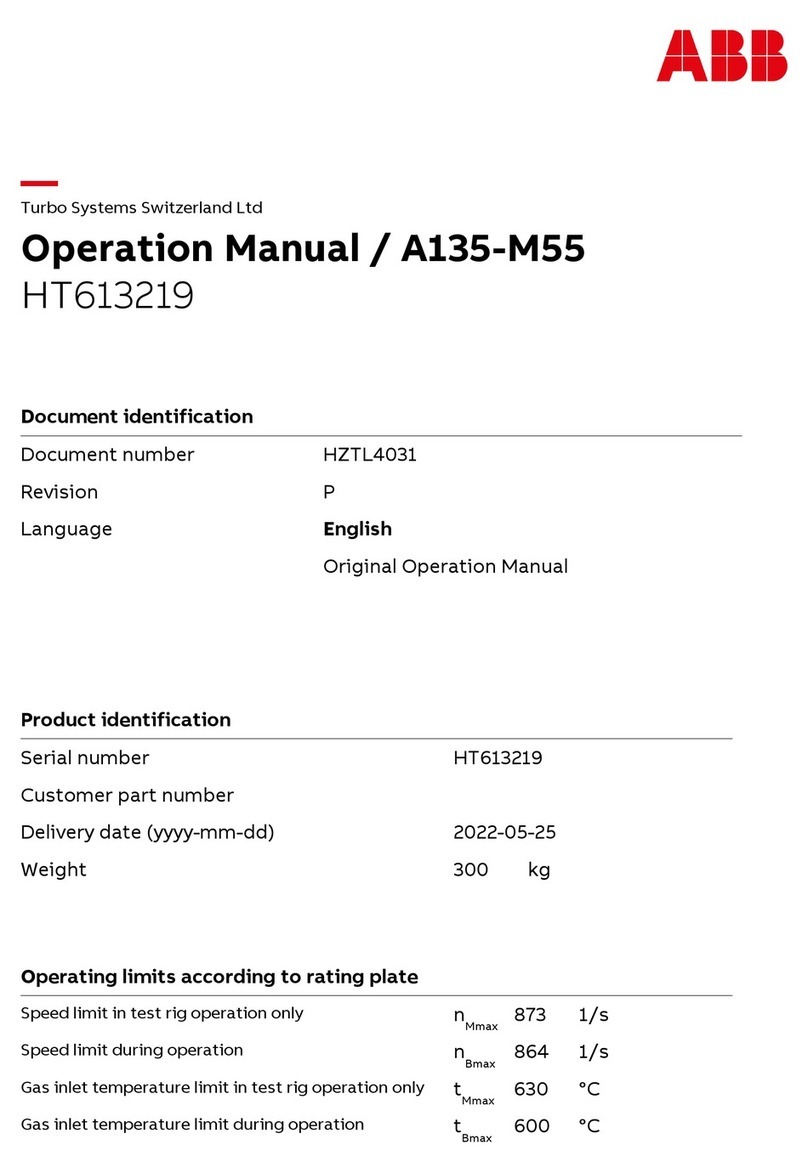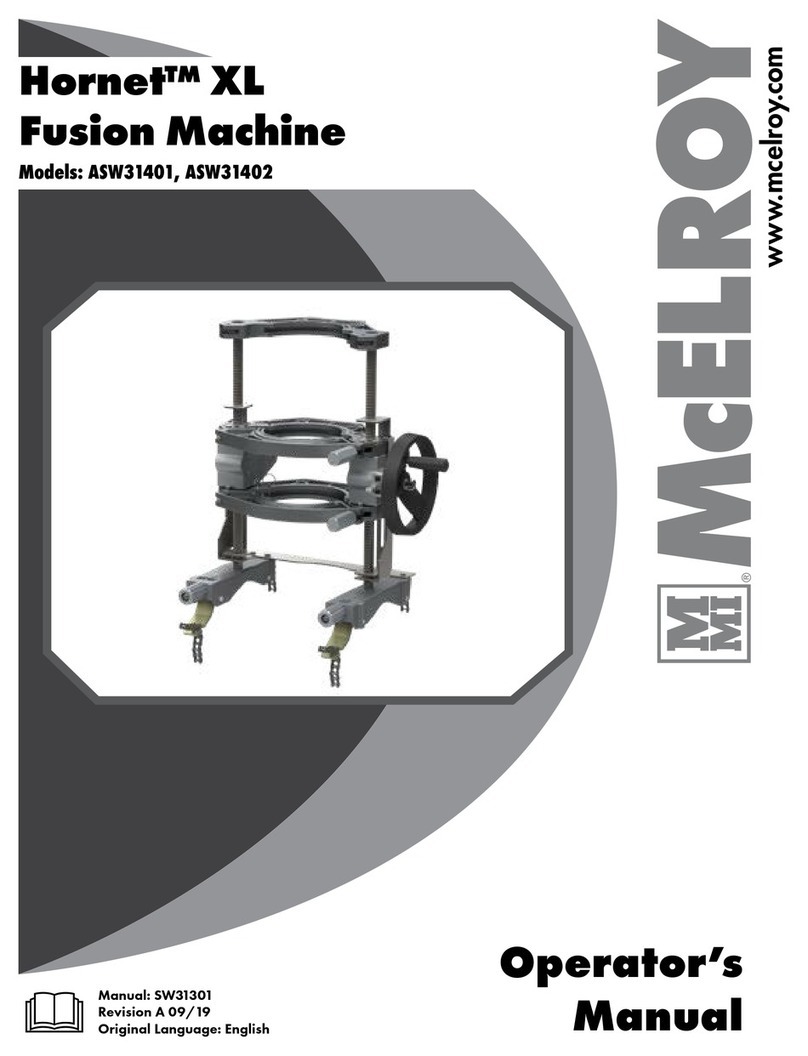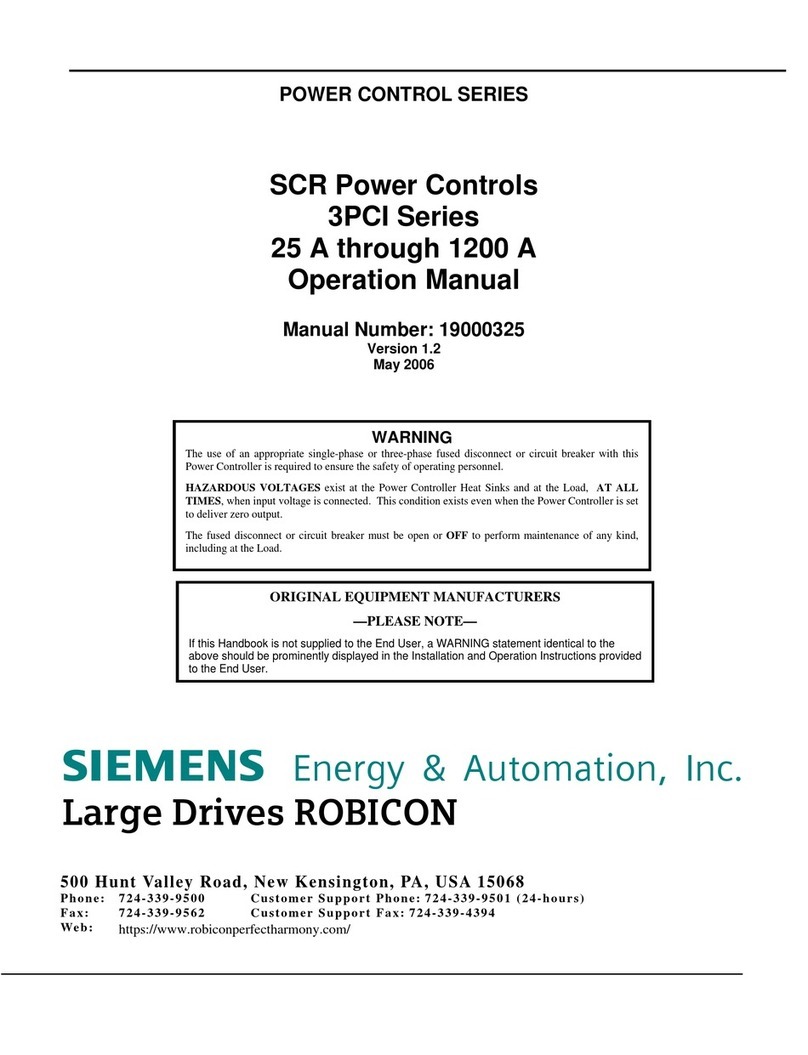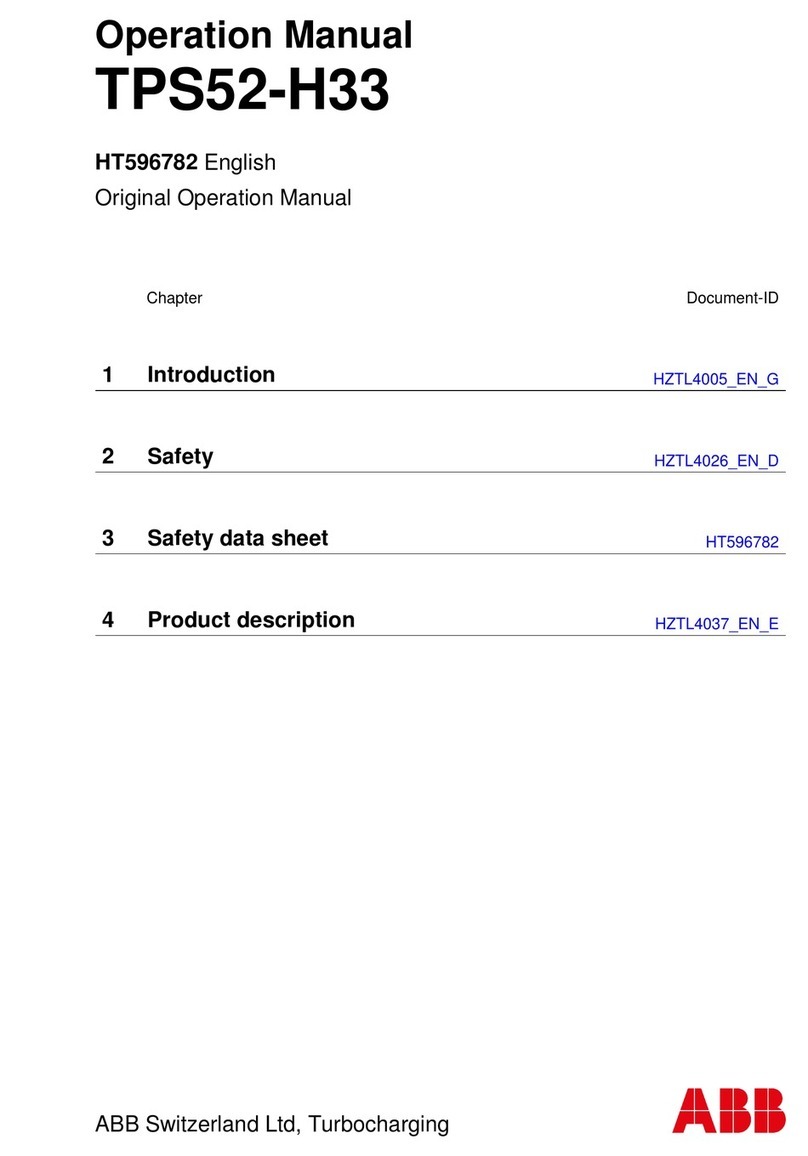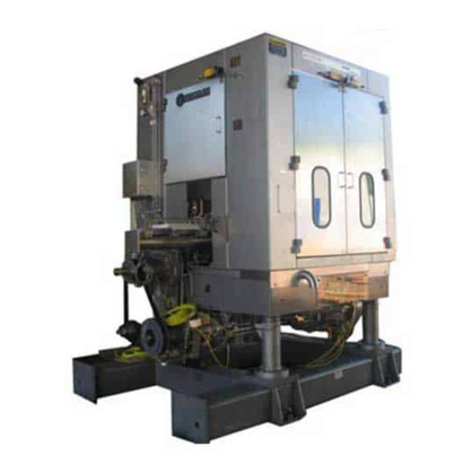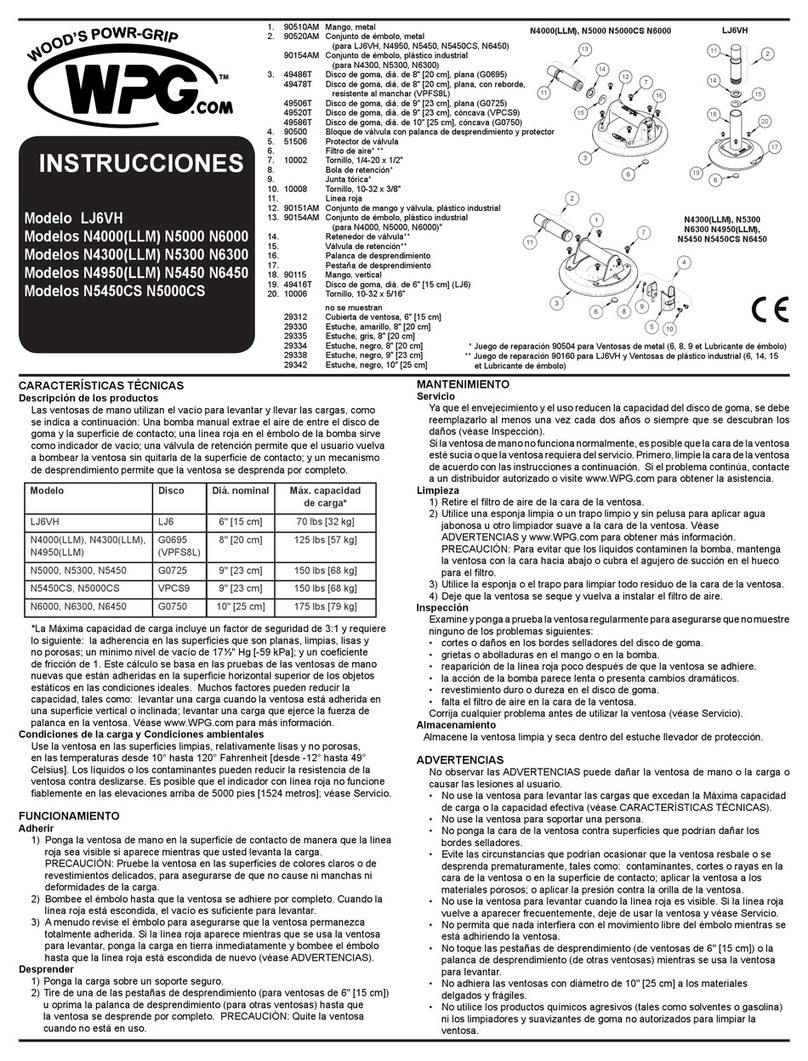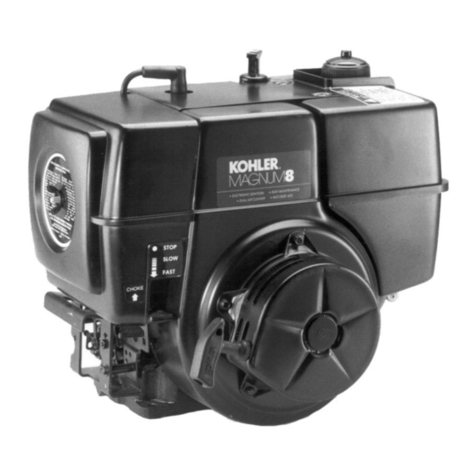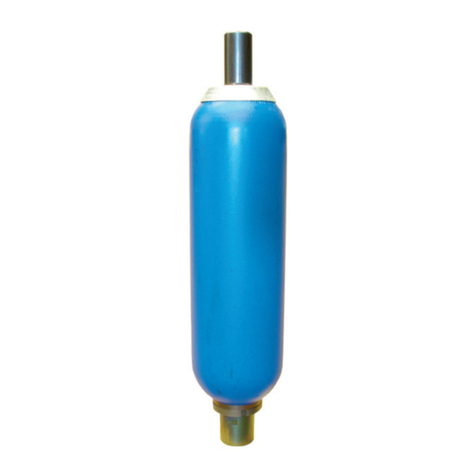Chore-Time 108 FLEX-AUGER User manual

MA1032E60
Model 108
FLEX-AUGERFeed Delivery System
Installation Manual
Installation • Wiring Diagrams • Start-Up Procedure • Maintenance •
Parts Lists • Trouble-Shooting Guide
May 1997

WARRANTY INFORMATION
CHORE-TIME EQUIPMENT, A Division of CTB, Inc.
P.O. Box 2000, Milford, Indiana 46542-2000 U.S.A.
Chore-Time Equipment warrants each new product manufactured by it to be free from defects in material or
workmanship for one year from the date of initial installation by the original purchaser. If such a defect is found
by Chore-Time to exist within the one year period, Chore-Time will, at its option, (a)repair or replace such
product free of charge, F.O.B. the factory of manufacture, or (b) refund to the original purchaser the original
purchase price, in lieu of such repair or replacement.
Conditions and limitations:
1. The product must be installed and operated in accordance with instructions published by
Chore-Time or warranty will be void.
2. Warranty is void if all components of a system are not supplied by Chore-Time.
3. This product must be purchased from and installed by an authorized Chore-Time dealer or
certified representative thereof, or the warranty will be void.
4. Malfunctions or failure resulting from misuse, abuse, negligence, alteration, accident, or
lack of proper maintenance shall not be considered defects under this warranty.
5. This warranty applies only to systems for the care of poultry and livestock. Other
applications in industry or commerce are not covered by this warranty.
Chore-Time shall not be liable for any consequential or special damage which any purchaser may suffer or claim
to have suffered as a result of any defect in the product. "Consequential" or "special damages" as used herein
include, but are not limited to, lost or damaged products or goods, costs of transportation, lost sales, lost orders,
lost income, increased overhead, labor and incidental costs and operational inefficiencies.
THIS WARRANTY CONSTITUTES CHORE-TIME’S ENTIRE AND SOLE WARRANTY AND CHORE-TIME
EXPRESSLY DISCLAIMS ANY AND ALL OTHER WARRANTIES, INCLUDING, BUT NOT LIMITED TO,
EXPRESS AND IMPLIED WARRANTIES AS TO MERCHANTABILITY, FITNESS FOR PARTICULAR
PURPOSE SOLD AND DESCRIPTION OR QUALITY OF THE PRODUCT FURNISHED HEREUNDER.
Any exceptions to this warranty must be authorized in writing by an officer of the company. Chore-Time reserves
the right to change models and specifications at any time without notice or obligation to improve previous models.

Model 108 FLEX-AUGERInstallation Manual
( 3 )
Support Information
(CE-mark serial number)
The Chore-Time FLEX-AUGER Feed Delivery System is designed to convey poultry and
livestock feed types. Using this equipment for any other purpose or in a way not within the
operating recommendations specified in this manual will void the warranty and may cause
personal injury and/or death.
This manual is designed to provide comprehensive planning,
installation, wiring, operation, and parts listing information.
The Table of Contents provides a convenient overview of the
information in this manual. The Table of Contents also
specifies which pages contain information for the distributor,
installer, and consumer (end user).
Chore-Time Equipment recognizes CE Mark and pursues
compliance in all applicable products. Fill in the CE-Mark
serial number in the blank space provided for future reference.
Fill in the following information about your FLEX-AUGER Feed Delivery System. Keep
this manual in a clean, dry place for future reference.
Distributor’s Name
Distributor’s Address
Distributor’s Phone Date of Purchase
Installer’s Name
Installer’s Address
Installer’s Phone Date of Installation
System Specifications
Feed Delivery System Supplying
Tools needed to install your
Model 108 Flex-Auger System include:
1. Regular Screwdriver
2. Allen Wrenches
3. Box-End Wrenches
4. Drive Ratchet and Sockets
5. Locking Pliers
6. File
7. Saw to cut PVC Tubes
8. 3.5" Hole Saw or Sabre Saw
9. Screw-Hook Driver
10. Bolt Cutters or Hack Saw
11. PVC Cleaning Solvent
12. Wire Cutters
13. Wire Strippers
14. Adequate Size and Quantity of Electrical Wire
15. Electrical Drill and Drill Bits
16. Abrasive Cut-off Saw (for steel systems only)
17. Oxy-Acetylene Torch and Brazing Rod
18. Another person to help!!

Model 108 FLEX-AUGERInstallation Manual
( 4 )
Table of Contents
Topic Page User
Warranty Information . . . . . . . . . . . . . . . . . . . . . . . . . . . . . . . . . . . . . . . . . . . . . . 2C, D
Support Information . . . . . . . . . . . . . . . . . . . . . . . . . . . . . . . . . . . . . . . . . . . . . . . 3C, D
Safety Information . . . . . . . . . . . . . . . . . . . . . . . . . . . . . . . . . . . . . . . . . . . . . . 5 - 6 C, I
General Information, Capacities and Specifications . . . . . . . . . . . . . . . . . . . . . . . . 6C, D
Glossary of Terms . . . . . . . . . . . . . . . . . . . . . . . . . . . . . . . . . . . . . . . . . . . . . . . . 7C, D
Planning the Model 108 FLEX-AUGER Feed Delivery System . . . . . . . . . . . . . 8 - 17 C, D, I
Typical System Installations . . . . . . . . . . . . . . . . . . . . . . . . . . . . . . . . . . . . . . 10 - 13 C, D, I
Model 108 FLEX-AUGER Systems Bin Placement Chart . . . . . . . . . . . . . . . . . . . . . .14 C, D, I
Model 108 FLEX-AUGER Systems Bin Placement Chart (w/Screener) . . . . . . . . . . . .15 C, D, I
Various Feed Bin and Screener Placement Diagrams . . . . . . . . . . . . . . . . . . . . 16 - 17 C, D, I
Installation Instructions for Model 108 FLEX-AUGER Feed Delivery System . . 18 - 38 I
Bin Location Information . . . . . . . . . . . . . . . . . . . . . . . . . . . . . . . . . . . . . . . . . . . . .18 I
Boot Installation . . . . . . . . . . . . . . . . . . . . . . . . . . . . . . . . . . . . . . . . . . . . . . . 18 - 19 I
Auger Tube Installation . . . . . . . . . . . . . . . . . . . . . . . . . . . . . . . . . . . . . . . . . . 20 - 21 I
Outlet Drop Installation . . . . . . . . . . . . . . . . . . . . . . . . . . . . . . . . . . . . . . . . . . 22 - 23 I
Support the System Inside the Building . . . . . . . . . . . . . . . . . . . . . . . . . . . . . . 24 - 25 I
Support the System Outside the Building . . . . . . . . . . . . . . . . . . . . . . . . . . . . . 25 - 27 I
Control Unit and Power Unit Installation . . . . . . . . . . . . . . . . . . . . . . . . . . . . . . 28 - 29 I
Belt Drive Control Unit Installation . . . . . . . . . . . . . . . . . . . . . . . . . . . . . . . . . . . . . .30 I
Auger Installation . . . . . . . . . . . . . . . . . . . . . . . . . . . . . . . . . . . . . . . . . . . . . . 30 - 31 I
Cover Plate Installation . . . . . . . . . . . . . . . . . . . . . . . . . . . . . . . . . . . . . . . . . . . . . .32 I
Auger Brazing . . . . . . . . . . . . . . . . . . . . . . . . . . . . . . . . . . . . . . . . . . . . . . . . . 33 - 34 I
Restrictor Adjustment . . . . . . . . . . . . . . . . . . . . . . . . . . . . . . . . . . . . . . . . . . . 34 - 35 I
Feed Level Control Installation . . . . . . . . . . . . . . . . . . . . . . . . . . . . . . . . . . . . . . . .35 I
Straight-Through Tandem Installation. . . . . . . . . . . . . . . . . . . . . . . . . . . . . . . . 36 - 38 I
System Wiring Diagrams . . . . . . . . . . . . . . . . . . . . . . . . . . . . . . . . . . . . . . . 39 - 40 I
Operating Recommendations for the Model 108 FLEX-AUGER . . . . . . . . . . . . . . 41 C, D
Start-Up Procedure for New Systems . . . . . . . . . . . . . . . . . . . . . . . . . . . . . . . . . 42 C, I
Parts Listings . . . . . . . . . . . . . . . . . . . . . . . . . . . . . . . . . . . . . . . . . . . . . . . . 43 - 50 C, D
Miscellaneous Line Components . . . . . . . . . . . . . . . . . . . . . . . . . . . . . . . . . . . . . . .43 C, D
Model 108 Drop Kit: Part No. 34358 . . . . . . . . . . . . . . . . . . . . . . . . . . . . . . . . . . . . .43 C, D
Power Units . . . . . . . . . . . . . . . . . . . . . . . . . . . . . . . . . . . . . . . . . . . . . . . . . . . . . .44 C, D
Single Phase Direct Drive Control Unit . . . . . . . . . . . . . . . . . . . . . . . . . . . . . . . . . . .45 C, D
Single Phase Belt Drive Control Unit . . . . . . . . . . . . . . . . . . . . . . . . . . . . . . . . . . . .46 C, D
Three Phase Direct Drive Control Unit . . . . . . . . . . . . . . . . . . . . . . . . . . . . . . . . . . .47 C, D
Model 108 Boot Components . . . . . . . . . . . . . . . . . . . . . . . . . . . . . . . . . . . . . . 48 - 49 C, D
Trouble Shooting the FLEX-AUGER System . . . . . . . . . . . . . . . . . . . . . . . . . 51 - 52 C, D
Maintenance of the FLEX-AUGER System . . . . . . . . . . . . . . . . . . . . . . . . . . 53 - 55 C, D
Livestock and Poultry Feed Consumption . . . . . . . . . . . . . . . . . . . . . . . . . . . . . . 56 C, D
Legend: D= Distributor • I = Installer • C= Customer (End User)

Model 108 FLEX-AUGERInstallation Manual
( 5 )
SAFETY INFORMATION
Caution, Warning and Danger Decals have been placed on the equipment to warn of potentially dangerous situations. Care
should be taken to keep this information intact and easy to read at all times. Replace missing or damaged safety signs.
Using the equipment for purposes other than specified in this manual may cause personal injury or damage to the equipment.
Safety–Alert Symbol
This is a safety–alert symbol. When you see this symbol on your equipment, be alert
to the potential for personal injury. Chore-Time equipment is designed to be installed
and operated as safely as possible...however, hazards do exist.
DANGER
WARNING
CAUTION
Signal Words
Signal words are used in conjunction with the safety–alert symbol to identify
the severity of the warning.
DANGER .............identifies immediate hazards which, if not
avoided, WILL result in severe personal injury or
death.
WARNING...........identifies hazards or unsafe practices which, if not
avoided, COULD result in severe personal injury
or death.
CAUTION ............identifies hazards or unsafe practices which, if not
avoided, COULD result in minor personal injury
or product or property damage.
DANGER—MOVING AUGER
This decal is placed on the Clean-Out Cover of the
FLEX-AUGER Control Unit.
Severe personal injury will result, if the electrical
power is not disconnected, prior to servicing the
equipment.
DANGER—ELECTRICAL HAZARD
Disconnect electrical power before inspecting or servicing equipment unless
maintenance instructions specifically state otherwise.
Ground all electrical equipment for safety.
All electrical wiring must be done by a qualified electrician in accordance with
local and national electric codes.
Ground all non-current carrying metal parts to guard against electrical shock.
With the exception of motor overload protection, electrical disconnects and
over current protection are not supplied with the equipment.

Model 108 FLEX-AUGERInstallation Manual
( 6 )
SAFETY INFORMATION
Use caution when working with the
Auger--springing auger may cause personal injury.
CAUTION
General Information
Please read the installation instructions in this manual prior to beginning the
installation. This manual is designed to provide the information necessary
for the installation, operation, and maintenance of the Model 108 Feed
Delivery System.
Please pay special attention to the danger decals and caution information,
they are there for YOUR PROTECTION.
Capacities and Specifications of the Model 108
FLEX-AUGER Feed Delivery System
The Model 108 FLEX-AUGER Feed Delivery System is available with either
PVC or steel auger tubes. PVC and steel tubes should not be mixed in a
system.
DO NOT USE PVC AUGER TUBING WITH FEEDS CONTAINING CALCIUM.
The steel auger tubes should be used for feeds with calcium.
The Model 108 FLEX-AUGER Feed Delivery System has an approximate
conveying capacity* of 220 pounds per minute (100 kg per minute), or 13,200
pounds per hour (6,000 kg per hour). A high capacity Model 108 system may
be ordered for applications requiring up to 250 pounds per minute (113 kg
per minute). The maximum recommended running time per day is 4 hours.
*Carrying capacities are based on feed density of 40 pounds per cubic foot
or 640 kg per cubic meter.
The Model 108 is designed to carry feeds such as mash, crumbles, shelled
corn, high moisture corn, or pellets up to approximately 3/16” x 1/2" (4.7 x
12.7 mm) in size. Applications other than conveying poultry and
livestock rations will void the warranty.
Adequate support must be provided to prevent the tubes from sagging and
support the weight of the Control Unit. The auger, tubes, and feed weigh ap-
proximately 8 lbs/ft. (12 kg/m). The Control Unit weighs approximately 100
lbs. (45 kg).
MAXIMUM MOISTURE CONTENT OF CORN FOR THE MODEL 108 FLEX-AUGER IS
27%.
MAXIMUM MOLASSES CONTENT IS 2%.

Model 108 FLEX-AUGERInstallation Manual
( 7 )
The 30 Degree Boot (left) is the standard boot used in
single bin applications.
The Straight-Out Boot (right) may be used in multiple
bin applications, elevated bins, and systems with less
free flowing feed stuffs.
The Hopper Level Control
is used to control the feed
level in the hoppers.
The Control Unit
(right) is located at
the end of the fill
system. A Power
Unit (left) is secured
to the Control Unit to
turn the auger.
An Extension Boot (optional) may be used to provide
additional length to a system. Multiple Extension Boots
may be used on very long systems.
An Outlet Drop is located at each
outlet opening along the FLEX-AU-
GER auger line.
The fill system may be controlled by the Drop Tube Switch (left)
or the Proximity Level Switch (right). Both switches are optional
and must be ordered separtely.
The 30 Degree Two Motor Tan-
dem Boot (optional) is used
when a cross auger is required
under two feed bins. This allows
the feed bins to be set at a 90
degree angle to the FLEX-AU-
GER feeder line.
Glossary of Terms
The Auger Timer (optional) is
used to control the length of au-
ger run-time. It may be used as
a safety backup to prevent ex-
cessive run time.
The Lower Boot
Components, locat-
ed under the feed
bin, include a bear-
ing and feed re-
strictor.

Model 108 FLEX-AUGERInstallation Manual
( 8 )
*Maximum line lengths should be reduced for elevations over 8’ (2.4 m)
and/or inclines steeper than 45 degrees.
Maximum lengths for 108 systems include use of two PVC elbows. If
additional elbows are used, decrease line length by 30 ft. (9 m) per
elbow. Length of extension systems do not include elbows. Decrease
maximum extension system lengths by 30 ft. (9 m) per elbow if used in
the system.
Horsepower requirements are based on length of the Model 108
FLEX-AUGER system and type of system installed--i.e. number of
turns.
See Model 108 FLEX-AUGER Systems Bin Placement Section (Pages
14 - 17) for typical bin to building placement using various elevations,
boots, and screener options.
1. For the easiest installation and most trouble-free operation, locate
the feed bin in a direct line with the FLEX-AUGER Feed Delivery
System. The layout charts on Pages 14 and 15 provide some points
of reference for bin placement according to the height at which the
Planning the
Model 108 FLEX-AUGER
Feed Delivery System
Maximum Line Lengths* for standard 348 RPM Systems
Motor Power Unit Standard Extended
HP Part No. System System
3/4 3259-52 50 Ft. (15.2 m) 75 Ft. (22.8 m)
1 3259-49 100 Ft. (30.5 m) 135 Ft. (41.1 m)
1-1/2 3259-66 150 Ft. (45.7 m) 185 Ft . (56.4 m)
Maximum Line Lengths* for High Capacity 425 RPM Systems
Motor Power Unit Standard Extended
HP Part No. System System
13259-79 50 Ft. (15.2 m) 75 Ft. (22.8 m)
1-1/2 3259-80 100 Ft. (30.5 m) 135 Ft. (41.1 m)
23259-121 150 Ft. (45.7 m) 185 Ft . (56.4 m)
Carefully plan the Model 108 Fill System installation. Make sure the
system will not interfere with other equipment, doors, windows, etc.
The charts below provide power unit recommendations and maximum
system line lengths. The top chart applies to standard 348 RPM
systems. The lower chart applies to (optional) High Capacity 425 RPM
systems.
High Moisture Corn
Installations:
Reduce the line length
capacity for each Power
Unit by 50% in high
moisture corn
applications
Straight-Thru
Tandem
Installations:
Reduce the line length by
50 ft. (15.2 m) for
Straight-Through
Tandem Systems.

Model 108 FLEX-AUGERInstallation Manual
( 9 )
FLEX-AUGER tube enters the building. Remember, these are only
examples. The layouts can be modified by changing the elbows, the
tube sections, and/or the distance from the bin to the building.
FLEX-AUGER Feed Delivery Systems operate best at an angle of no
more than 60 degrees from horizontal to the entry of the building at
the desired height. Chore-Time considers a 45 degree elevation
to be standard. The lower the angle, the more reliable the
system.
2. Lay out the system as straight as possible. Avoid extra elbows and
curves by locating the feed bin in line with the feeders. One
horizontal 90 degree turn is permissible inside the building. 180
degree turns are not recommended under any conditions.
If additional turns or elbows are required, use an Extension Boot.
Remember: one 90 degree elbow requires the same power as 30’
(9.1 m) of straight line.
3. Plan the system so that the auger tubes are directly over the feeders
or hoppers to be filled, if possible. The drop tubes may be angled to
a maximum of 45 degrees from the vertical if necessary. At angles
greater than 45 degrees, bridging in the drop tubes may occur.
4. The control unit must be located over a feeder or hopper that will
require as much or more feed than any of the other feeders or
hoppers. If frequent filling is desired, mount the drop tube switch or
hopper level switch low so that this feeder or hopper will have a low
feed level. This allows the feeder to call for feed more often, the
system will restart, and the other feeders will be refilled sooner.
5. Do not locate outlet drops on or just before an elbow. Install the drop
after the elbow so feed will cushion the auger through the curve. If
there is some reason why the outlet drop cannot be moved, it must
have some "feed bypass" to cushion the auger through the elbow.
6. Avoid horizontal left-hand turns if possible. The elbow in a left-hand
turn is not cushioned by the feed and will wear faster. On systems
with a 90 degree horizontal left-hand turn, reduce the stretch to
reduce wear.
NOTE: A rule of thumb for left-hand turns is to reduce stretch to 6"
per 50’ (150 mm per 15 m) of auger on initial installation.
After the system has been broken in, it may be necessary
to increase the auger stretch to prevent auger surging.
7. On any Extended Length System, balance the power requirements
between the power unit that takes feed from the bin and the power
unit on the Extended Length System.
To do this, determine the total length of the system and divide by
two. Subtract 20’ (6.1 m) from the standard system and add 20’ (6.1
m) to the extended system.
Example: On a 240’ (73 m) system, the center of the system would
be 120’ (36.5 m). Subtract 20’ (6.1 m) from standard system, and
add it to the extended length system. The first power unit should be
located approximately 100’ (30 m) down the system. Locate the
second power unit approximately 140’ (42.7 m) from the first power
unit.

Model 108 FLEX-AUGERInstallation Manual
( 10 )
Typical System Installations
The FLEX-AUGER Delivery Systems may be readily adapted to
most feed delivery applications. The systems illustrated on the
following pages show the most common types of FLEX-AUGER
installations. These diagrams provide guidelines for laying out your
system.
Four systems that are NOT recommended are shown on Pages 12
and 13. Possible alternate systems are provided with each
non-recommended system.
System A represents a typical straight-line system with optional
tandem bin set-up. If this were a long system with many outlet
drops, some feed bypass should be provided by increasing the size
of the outlet holes, from small at the bin end, to the large at the
control end of the line.
System B represents an extended length system. Equalize the
power requirements of each part of the system. Optional equipment
required.
System C represents a twin boot system with the feed bin centered
at one end of the building.

Model 108 FLEX-AUGERInstallation Manual
( 11 )
System D utilizes right-hand 90 degree turns. The elevations should
be accomplished within the outside elbows. This system would be
recommended over system E since it eliminates additional elbows
and left hand turns.
System E uses one additional 90 degree elbow after entering the
building. Note that the elbows are left-hand turns. This system
would be improved if the feed bin was moved to the opposite side
of the building to provide right-hand turns instead.
System G represents an extended length system with one additional
90 degree elbow. This is acceptable, but Systems C or D would be
recommended (to reduce excessive run time). Optional equipment
required.

Model 108 FLEX-AUGERInstallation Manual
( 12 )
NOT ALLOWED. System H is not recommended, due to 180 degree,
left-hand turns. Erratic auger operation would be expected. The
feed bin should be relocated or an Extension Hopper should be
utilized as in System G.
NOT ALLOWED. System I is not recommended, due to 180 degree,
left-hand turns. Excessive elbow wear and erratic auger operation
would be expected. Systems D, E, or G would be recommended.
NOT ALLOWED. This system uses 180 degree elbows and would be
subject to premature elbow wear due to outlet drop placement
before an elbow. System C would be recommended.

Model 108 FLEX-AUGERInstallation Manual
( 13 )
NOT ALLOWED. Too many elbows. The result would be auger
vibration, motor stall, and excessive elbow wear. A twin system,
such as C, D, or E, would be recommended; or an Extension Hopper
could be utilized as in System G.

Model 108 FLEX-AUGERInstallation Manual
( 14 )
System Model Entrance Height 30 Degree Upper Bin Boot (part no. 4347) Straight-Out Upper Bin Boot (part no. 6093)
"H" 30 Degree 45 Degree 60 Degree 30 Degree 45 Degree 60 Degree
5’ (1.5 m) 9’ (2.7 m) - - - - - - - - - - - - 11.5’ (3.5 m) 10’ (3 m) - - - - - -
6’ (1.8 m) 11’ (3.4 m) 8.5’ (2.6 m) 8’ (2.4 m) 13.5’ (4.1 m) 11’ (3.4 m) 10’ (3 m)
7’ (2.1 m) 12.5’ (3.8 m) 9.5’ (2.9 m) 8.5’ (2.6 m) 15’ (4.6 m) 12’ (3.7 m) 11’ (3.4 m)
8’ (2.4 m) 14.5’ (4.4 m) 10.5’ (3.2 m) 9’ (2.7 m) 17’ (5.2 m) 13’ (4 m) 11.5’ (3.5 m)
9’ (2.7 m) 16’ (4.9 m) 11.5 (3.5 m) 9.5’ (2.9 m) 18.5’ (5.6 m) 14’ (4.3 m) 12’ (3.7 m)
10’ (3 m) 17.5’ (5.3 m) 12.5’ (3.8 m) 10’ (3 m) 20’ (6.1 m) 15’ (4.6 m) 12.5’ (3.8 m)
11’ (3.4 m) 19.5’ (5.9 m) 13.5’ (4.1 m) 10.5’ (3.2 m) 22’ (6.7 m) 16’ (4.9 m) 13’ (4 m)
12’ (3.7 m) 21’ (6.4 m) 14.5’ (4.4 m) 11.5’ (3.5 m) 23.5’ (7.2 m) 17’ (5.2 m) 13.5’ (4.1 m)
13’ (4 m) 23’ (7 m) 15.5’ (4.7 m) 12’ (3.7 m) 25.5’ (7.8 m) 18’ (5.5 m) 14’ (4.3 m)
14’ (4.3 m) 24.5’ (7.5 m) 16.5’ (5 m) 12.5’ (3.8 m) 27’ (8.2 m) 19’ (5.8 m) 15’ (4.6 m)
15’ (4.6 m) 26.5’ (8.1 m) 17.5’ (5.3 m) 13’ (4 m) 29’ (8.8 m) 20’ (6.1 m) 15.5’ (4.7 m)
16’ (4.9 m) 28’ (8.5 m) 18.5’ (5.6 m) 13.5’ (4.1 m) 30.5’ (9.3 m) 21’ (6.4 m) 16’ (4.9 m)
17’ (5.2 m) 30’ (9.1 m) 19.5’ (5.9 m) 14’ (4.3 m) 32.5’ (9.9 m) 22’ (6.7 m) 16.5’ (5 m)
18’ (5.5 m) 31.5’ (9.6 m) 20.5’ (6.2 m) 14.5’ (4.4 m) 34’ (10.4 m) 23’ (7 m) 17’ (5.2 m)
19’ (5.8 m) 33.5’ (10.2 m) 21.5’ (6.5 m) 15.5’ (4.7 m) 36’ (11 m) 24’ (7.3 m) 17.5’ (5.3 m)
20’ (6.1 m) 35’ (10.7 m) 22.5’ (6.8 m) 16’ (4.9 m) 37.5’ (11.4 m) 25’ (7.6 m) 18.5’ (5.6 m)
Model 108
Model 108 FLEX-AUGER Systems Bin Placement Chart
STRAIGHT-OUT BOOT 30 DEGREE BOOT
Use this chart to determine the distance from building to center of bin ("X") at the various entrance heights ("H")
and degrees of elevations listed below.
Degree of elevation = Angle at which the system is installed, including the 30 degree or straight-out Upper Boot.
These layout charts are for planning and reference purposes only. A combination of elbows and straight tube
may be required for your installation, depending on the distance from the bin to the building and the height at
which the auger tubes are to enter the building. The elbows may be easily cut to any angle required.
PAY PARTICULAR ATTENTION TO THE MINIMUM DISTANCE BETWEEN THE BIN AND THE BUILDING.
Many installation and operational difficulties can be avoided if the bin is located farther from the building. If in
doubt, it is BETTER TO BE TOO FAR AWAY THAN TOO CLOSE.
The maximum recommended angle of elevation above the horizontal is 60 degrees. The maximum elevation is
30 feet (9.1 m) . . . if the angle of elevation is no more that 45 degrees.
All systems require adequate support of the auger tubes to prevent sagging and/or excessive forces being
transmitted to the bin boot.
Distance from center of the bin to the building

Model 108 FLEX-AUGERInstallation Manual
( 15 )
Chart for minimum distances ("X") from building to center of bin using the various entrance heights ("H"), upper boots and
elevations listed below.
System Model Entrance Height 30 Degree Upper Bin Boot (part no. 4347) Straight-Out Upper Bin Boot (part no. 6093)
"H" 30 Degree 45 Degree 30 Degree 45 Degree
5’ (1.5 m) 12.5’ (3.8 m) 11.5’ (3.5 m) 15’ (4.6 m) 14’ (4.3 m)
6’ (1.8 m) 14’ (4.3 m) 12.5’ (3.8 m) 16.5’ (5 m) 15’ (4.6 m)
7’ (2.1 m) 16’ (4.9 m) 13.5’ (4.1 m) 18.5’ (5.6 m) 16’ (4.9 m)
8’ (2.4 m) 17.5’ (5.3 m) 14.5’ (4.4 m) 20’ (6.1 m) 17’ (5.2 m)
9’ (2.7 m) 19.5’ (5.9 m) 15.5’ (4.7 m) 22’ (6.7 m) 18’ (5.5 m)
10’ (3 m) 21’ (6.4 m) 16.5’ (5 m) 23.5’ (7.2 m) 19’ (5.8 m)
11’ (3.4 m) 23’ (7 m) 17.5’ (5.3 m) 25.5’ (7.8 m) 20’ (6.1 m)
12’ (3.7 m) 24.5’ (7.5 m) 18.5’ (5.6 m) 27’ (8.2 m) 21’ (6.4 m)
13’ (4 m) 26.5’ (8.1 m) 19.5’ (5.9 m) 29’ (8.8 m) 22’ (6.7 m)
14’ (4.3 m) 28’ (8.5 m) 20.5’ (6.2 m) 30.5’ (9.3 m) 23’ (7 m)
15’ (4.6 m) 29.5’ (9 m) 21.5’ (6.5 m) 32.5’ (9.9 m) 24’ (7.3 m)
16’ (4.9 m) 31.5’ (9.6 m) 22.5’ (6.8 m) 34’ (10.4 m) 25’ (7.6 m)
17’ (5.2 m) 33’ (10 m) 23.5’ (7.2 m) 35.5’ (10.8 m) 26’ (7.9 m)
18’ (5.5 m) 35’ (10.7 m) 24.5’ (7.5 m) 37.5’ (11.4 m) 27’ (8.2 m)
19’ (5.8 m) 36.5’ (11.1 m) 25.5’ (7.8 m) 39’ (11.9 m) 28’ (8.5 m)
20’ (6.1 m) 38.5’ (11.7 m) 26.5’ (8.1 m) 41’ (12.5 m) 29’ (8.8 m)
5’ (1.5 m) 11’ (3.4 m) 9.5’ (2.9 m) 11’ (3.4 m) 9.5’ (2.9 m)
6’ (1.8 m) 13’ (4 m) 10.5’ (3.2 m) 13’ (4 m) 10.5’ (3.2 m)
7’ (2.1 m) 14.5’ (4.4 m) 11.5 (3.5 m) 14.5’ (4.4 m) 11.5’ (3.5 m)
8’ (2.4 m) 16’ (4.9 m) 12.5’ (3.8 m) 16’ (4.9 m) 12.5’ (3.8 m
9’ (2.7 m) 18’ (5.5 m) 13.5’ (4.1 m) 18’ (5.5 m) 13.5’ (4.1 m)
10’ (3 m) 19.5’ (5.9 m) 14.5’ (4.4 m) 19.5’ (5.9 m) 14.5’ (4.4 m)
11’ (3.4 m) 21.5’ (6.5 m) 15.5’ (4.7 m) 21.5’ (6.5 m) 15.5’ (4.7 m)
12’ (3.7 m) 23’ (7 m) 16.5’ (5 m) 23’ (7 m) 16.5’ (5 m)
13’ (4 m) 25’ (7.6 m) 17.5’ (5.3 m) 25’ (7.6 m) 17.5’ (5.3 m)
14’ (4.3 m) 26.5’ (8.1 m) 18.5’ (5.6 m) 26.5’ (8.1 m) 18.5’ (5.6 m)
15’ (4.6 m) 28.5’ (8.7 m) 19.5’ (5.9 m) 28.5’ (8.7 m) 19.5’ (5.9 m)
16’ (4.9 m) 30’ (9.1 m) 20.5’ (6.2 m) 30’ (9.1 m) 20.5’ (6.2 m)
17’ (5.2 m) 32’ (9.8 m) 21.5’ (6.5 m) 32’ (9.8 m) 21.5’ (6.5 m)
18’ (5.5 m) 33.5’ (10.2 m) 22.5’ (6.8 m) 33.5’ (10.2 m) 22.5’ (6.8 m)
19’ (5.8 m) 35.5’ (10.8 m) 23.5’ (7.1 m) 35.5’ (10.8 m) 23.5’ (7.2 m)
20’ (6.1 m) 37’ (11.3 m) 24.5’ (7.4 m) 37’ (11.3 m) 24.5’ (7.5 m)
Use this diagram and chart to determine proper
feed bin placement when using screener.
"X" = distance from center of bin to where fill system
enters the building.
"H" = height from top of bin pad to where fill system
enters the building.
Degree of elevation = Angle at which the system is
installed (from horizontal).
System shown with screener boot installed in-line;
system may also be installed with the screener boot
rotated 90 degrees.
Model 108 using
screener.
Screener Boot is
in-line with system.
Model 108 using
screener.
Screener Boot is
rotated 90 degrees
to system.
Model 108 FLEX-AUGER Systems Bin Placement Chart
(with In-Line or Rotated Screeners)

Model 108 FLEX-AUGERInstallation Manual
( 16 )
30° or Straight-Out Bin Boot with Feed
Screener BootRotated 90°
30° Bin Boot with Feed Screener

Model 108 FLEX-AUGERInstallation Manual
( 17 )
Straight-Out Bin Boot with Feed Screener

Model 108 FLEX-AUGERInstallation Manual
( 18 )
Bin Location Information
For easiest installation and most trouble-free operation, locate the
feed bin directly in line with the FLEX-AUGER System. The layout
charts on pages 14 through 17 provide some points of reference for
bin placement according to the height at which the system enters
the building. The 30 degree or straight-out boots combined with
various elbow hookups offer a wide range of possibilities. The
charts are only for reference. Modify and adjust elbows and tube
sections as needed.
NOTE: Two 45 degree PVC elbows are standard with Model 108
FLEX-AUGER Delivery Systems. If additional elbows are required
they must be ordered separately.
The bin collar is installed during bin assembly. Chore-Time bins
have a welded collar. Bin Adapter Kits are available to modify
existing bins so that the welded collar can be used. In addition, a
Universal Adapter Plate is available to allow the FLEX-AUGER boot
to be installed to other manufacturers’ bins.
Tighten all bin-seal bolts from the nut side. This prevents cutting
and "spinning out" of the plastic washer.
Boot Installation
1. Insert the upper boot into the bin collar and turn it to line up with
the direction that the auger line will go. The boot must be as far
up into the opening as it will go. Use the holes in the ring for
drilling guides and drill 11/32" (8.8 mm) holes in the upper rim of
the boot. Attach the boot to the bin collar with the hardware
provided. See Figure 1 on Page 19.
IMPORTANT: Failure to install the hardware as shown in
Figure 1 may cause breakage of the red boot body.
2. Attach the transfer plate to the upper boot. Use truss head
bin-seal bolts installed from the inside of the plate, with flat
washers placed under the nuts.
3. Insert the slide into the transfer plate slot so that it is in its
operating position before bolting the slide shield in place.
Remove the paper backing from the sealing strip before
fastening the slide shield to the transfer plate. Use two
5/16-18x3/4" hex head machine screws to secure the shield.
4. Bolt the lower boot to the transfer plate using four 5/16-18x3/4"
hex head machine screws.
5. After the auger tubes and auger have been installed, attach the
6197 Clean-Out Cover Plate or the optional Proximity Boot
Switch to the lower boot.
Installation Instructions for the
Model 108 FLEX-AUGER
Feed Delivery System

Model 108 FLEX-AUGERInstallation Manual
( 19 )
KEY DESCRIPTION PART NO.
15/16-18 X 3/4" Truss Hd. MS 7943-1
25/16" Nylon Washer 7946
35/16-18 Nylon Hex Nut 7945
4Hopper Collar -
5Boot Body -
6Transfer Plate -
Figure 1. Boot installation diagram. (Side View)

Model 108 FLEX-AUGERInstallation Manual
( 20 )
Auger Tube Installation
The FLEX-AUGER Delivery System includes two 45 degree elbows
as standard equipment. These elbows are used to make up the
sloping portion of the auger line at the feed bin, and elsewhere in
the system if necessary. If additional elbows are required they
should be ordered separately. Figure 2 shows how the elbow can be
cut into shorter sections.
Figure 2. PVC Elbow Cutting Guidelines (Side View)
Dimension PVC Steel
"A" 16.8" (43 cm) 16.3" (41 cm)
"B" 25.2" (64 cm) 24.4" (62 cm)
"C" 33.6" (85 cm) 32.5" (83 cm)
"D" 50.3" (128 cm) 48.8" (124 cm)
NOTE: PVC elbows are belled. Dimensions shown do not include bell.
NOTE: All measurements are along the outside edge of the elbow.
1. Determine where the entrance hole for the auger tube must be
located on the building and cut it.
2. If necessary, cut the elbow used where the auger enters the
building. Slide the seal ring and neoprene seal over the straight end
of the elbow and place it in the hole cut in the building, with the
belled end outside the building. See Figure 3.
3. Clamp the belled end of the second elbow on the outlet end of the
boot on the feed bin.
4. Place the straight end of a tube section inside the belled end of the
elbow in the building. Hold the straight section of auger tube so that
it touches the elbow on the boot. Mark the spot where the tube
touches the boot elbow and cut the elbow at that point.
5. Place the belled end of the auger tube over the end of the elbow just
cut, and hold the tube against the top elbow. Mark and cut the
straight auger tube so that it will fit between the two elbows.
Remember to cut the auger tube long enough to fit inside the
belled end of the elbow in the building.
Other manuals for 108 FLEX-AUGER
6
Table of contents
Other Chore-Time Industrial Equipment manuals
